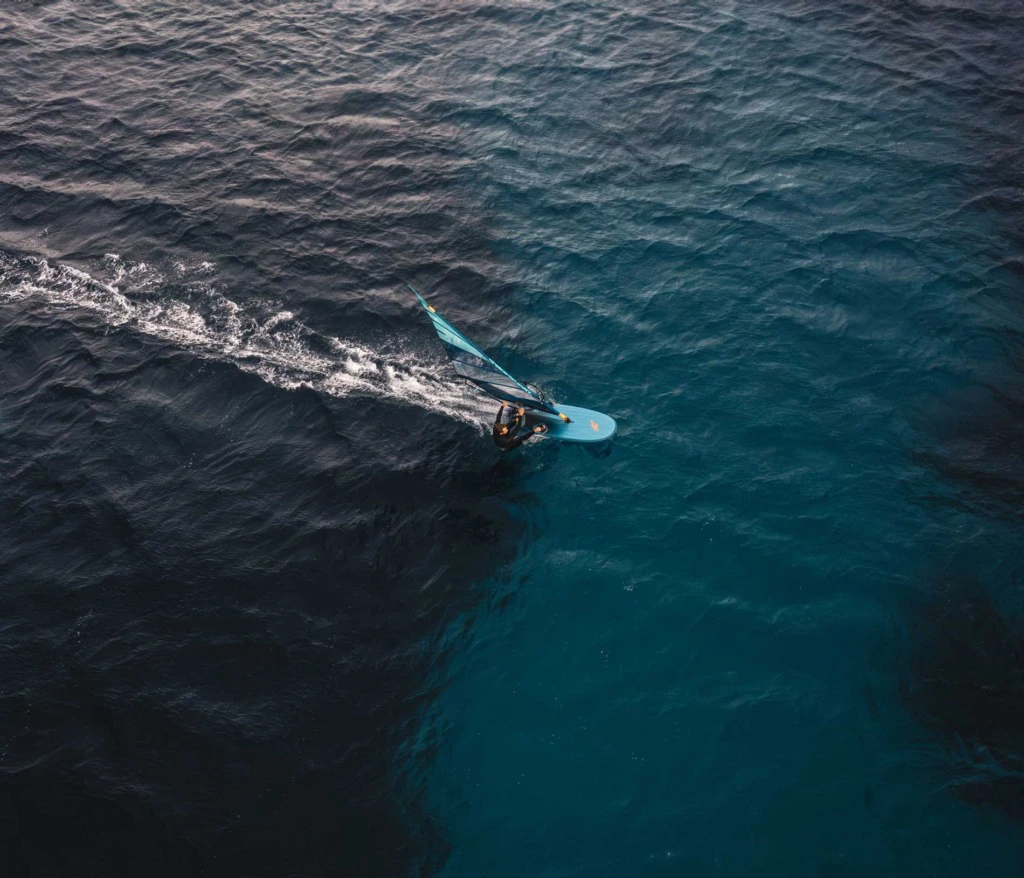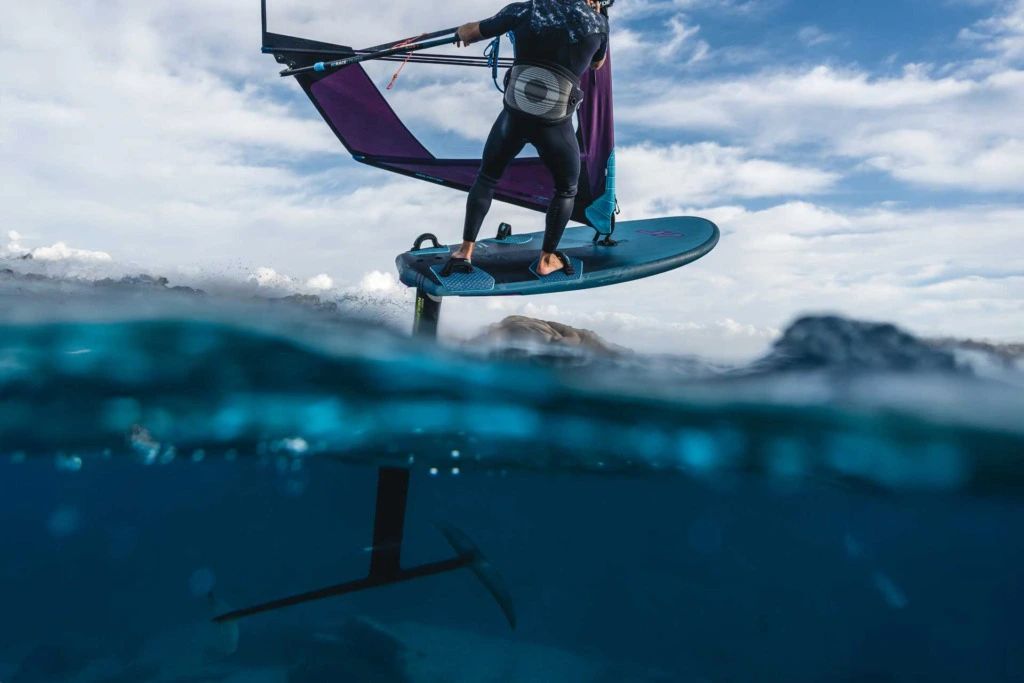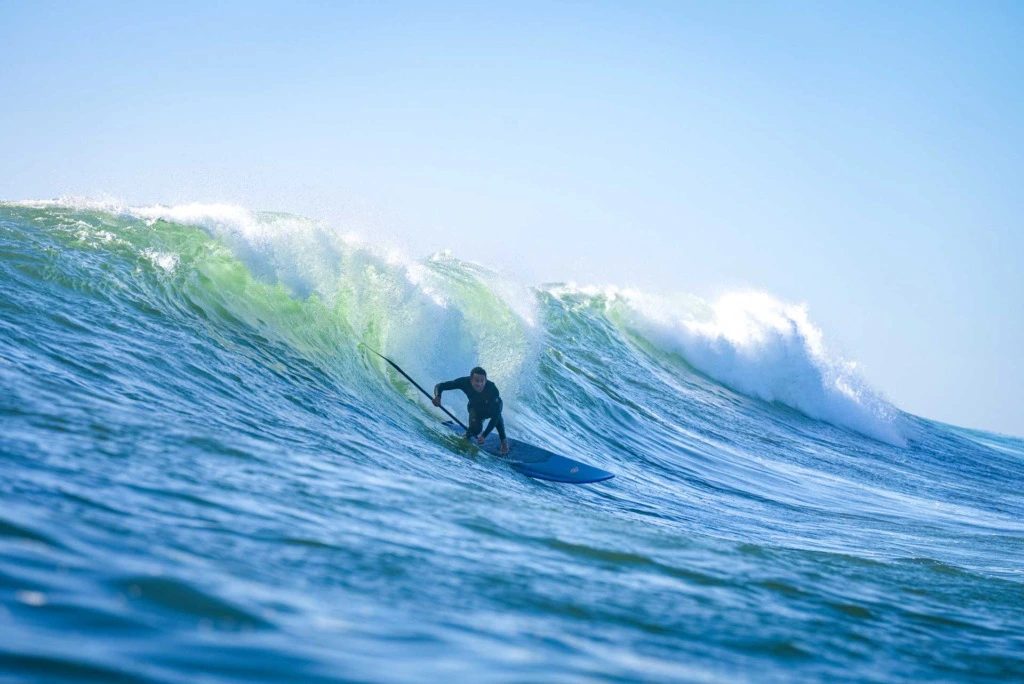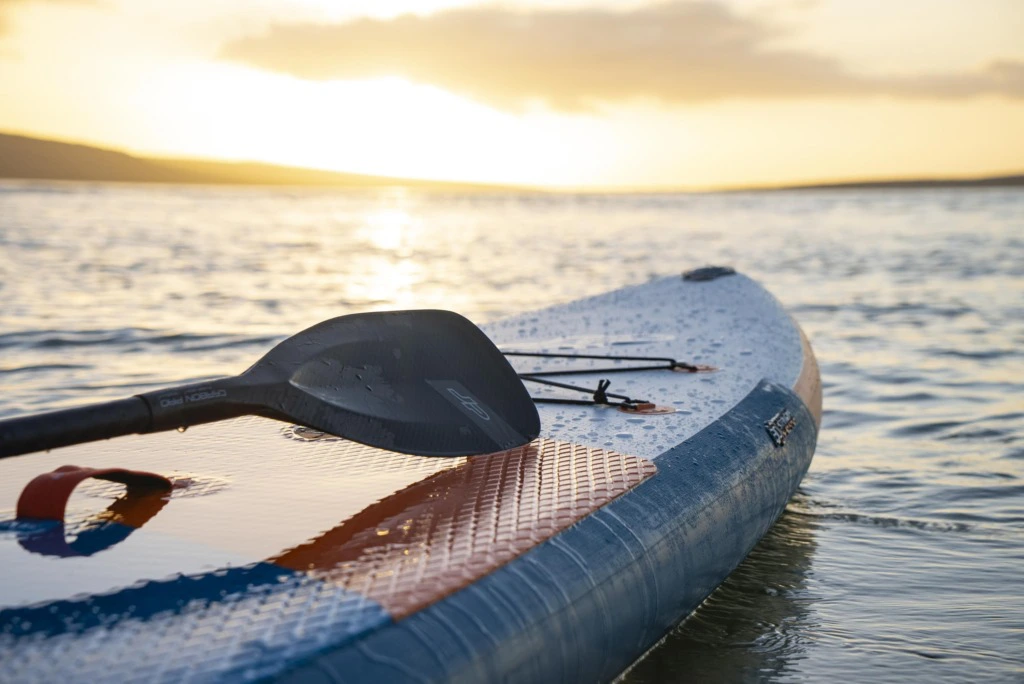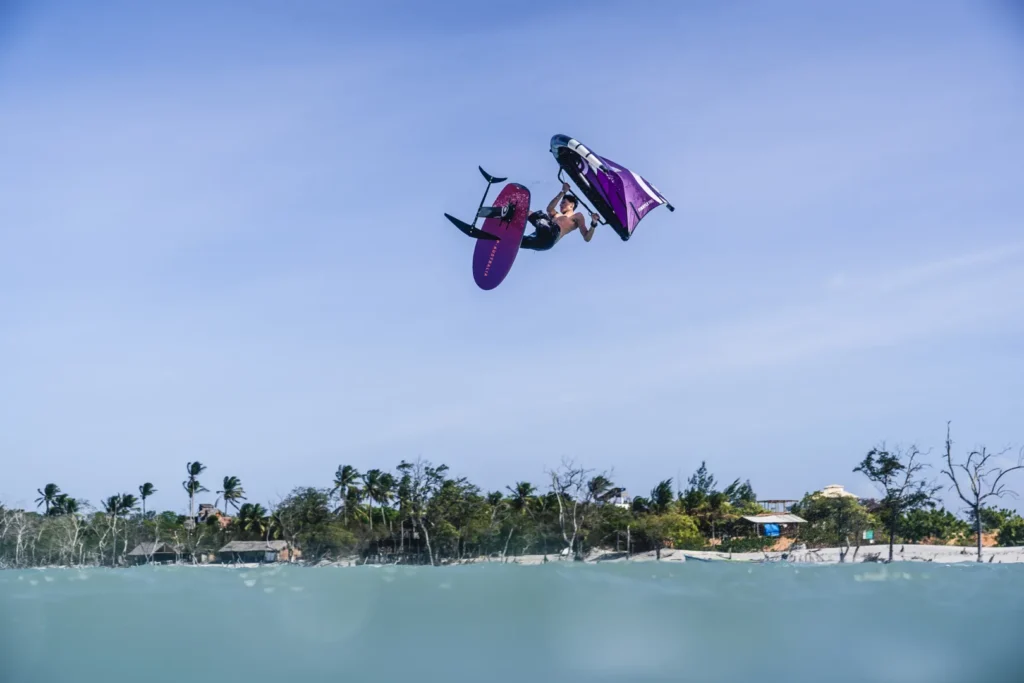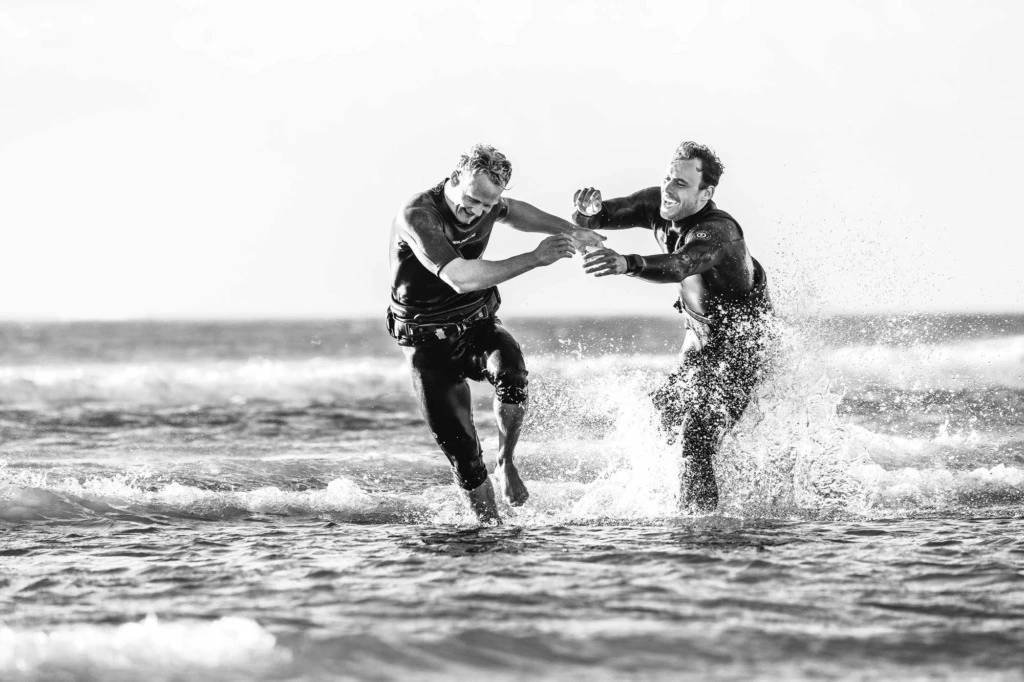UPWIND
Shorter harness lines automatically ensure an upright stance which gives you more lift to go upwind. Sheet in the sail as much as possible. If the front leg bends unintentionally, it helps to place the back foot in front of the strap. Try to tilt (“angle”) the board when you’re going upwind.
To do this, place the feet all the way out on the rail and lean out hanging on the sail. This way you can point upwind to the max.
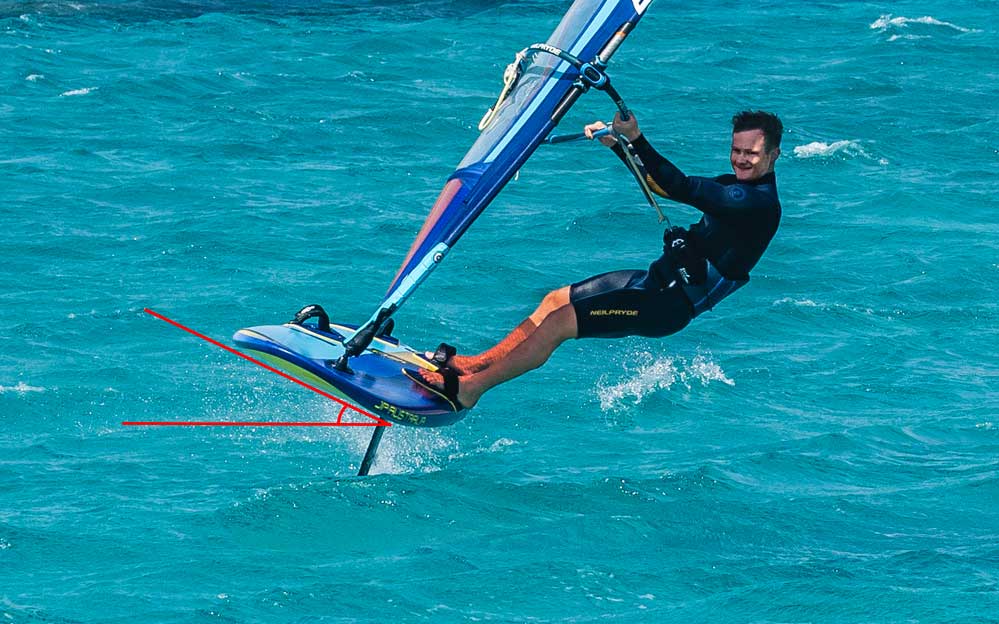
DOWNWIND
First, extend your harness lines. Place your back foot towards the middle of the board so that you can sheet out to grant most efficient air flow around the sail. For easy cruising, keep your body upright or lean far out to accelerate. Like this you are able to go really downwind on a broad reach and control everything with foot steering.
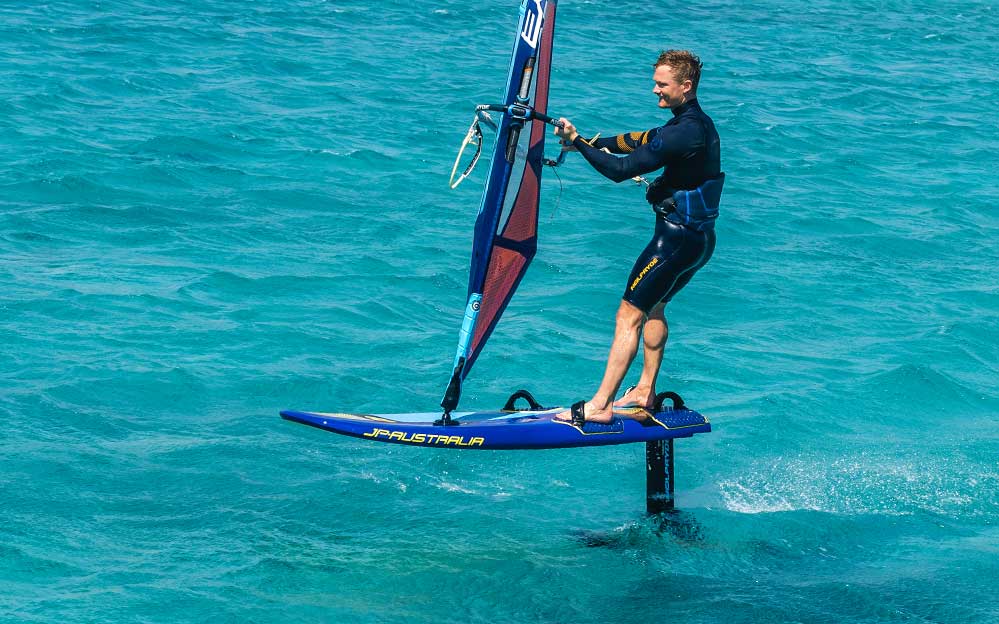
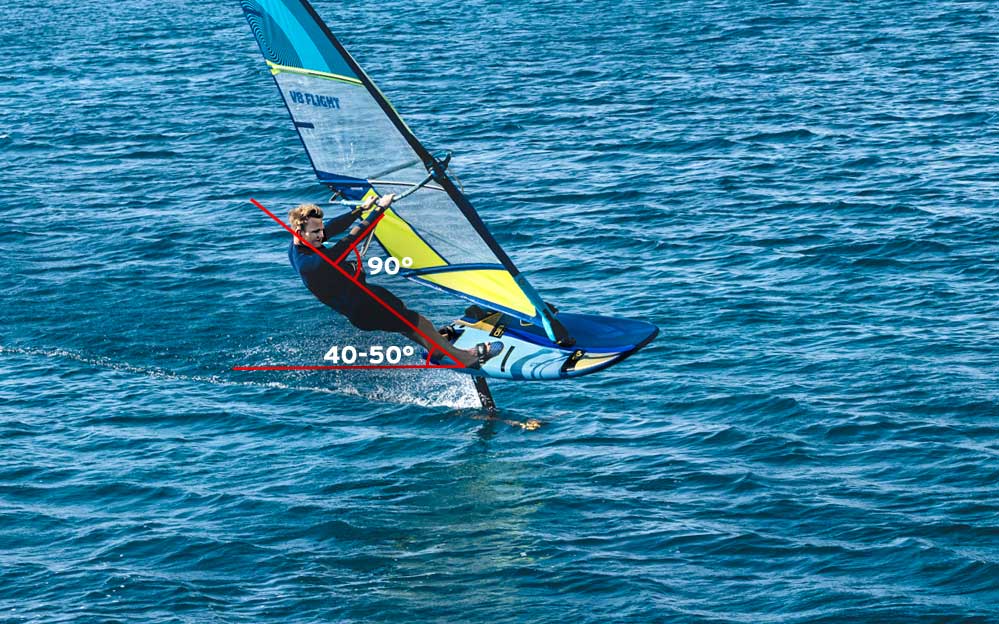
TIP: If you carsh, make sure that you hold onto the boom, don’t let go! Then you can tuck your legs towards your body to protect yourself.
NEVER LET GO OF THE SAIL !
That’s very important..
CROSSWIND (Speed)
Body position and equipment are crucial for high speed foiling. If you want to sail across the wind as fast as possible, we recommend long harness lines because you lean further outboards, get more pressure on the foil and this way remain in control. High lift can be compensated for by leaning forward. The higher the speed, the shorter the time to correct the slight misalignments. Don’t fly too high because at this point you will also be angling the board and the wing tip can come out of the water. If this happens, you may lose control and crash.
The position and angle on the board are crucial for fast riding on the foil: straight arms – 90 ° angle to the body
Lean far back – 40-50 ° angle to the surface of the water

